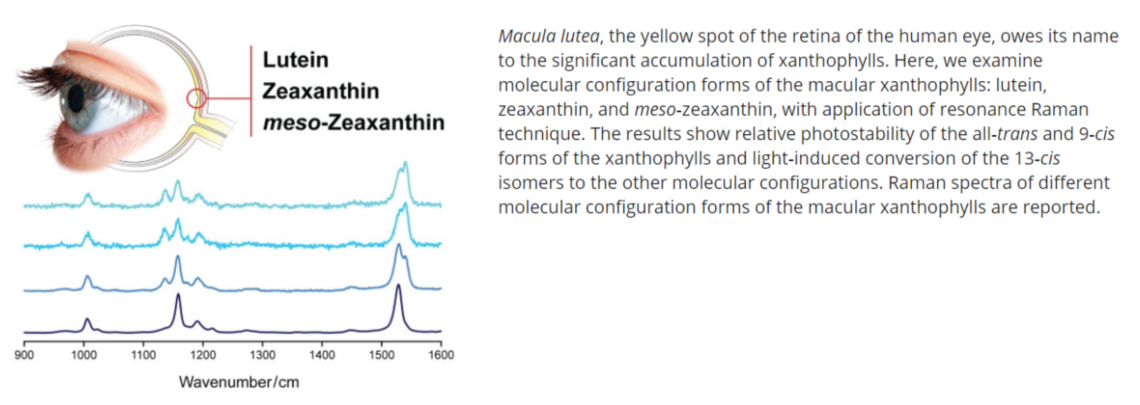
Raman spectroscopy analysis of molecular configuration forms of the macular xanthophylls
A. Sek, R. Welc, M.M. Mendes-Pinto, E. Reszczynska, W. Grudzinski, R. Luchowski, W.I. Gruszecki
Macula lutea, the yellow spot of the retina of the human eye, comprises three xanthophyll pigments: lutein, zeaxanthin, and meso-zeaxanthin, playing numerous important biological functions. Macular xanthophylls are exposed to relatively strong illumination in the eye, owing to the fact that the yellow spot is localized on the optical axis, in the frontal layer with respect to photoreceptors. In the present work, we address the problem of photostability and possible photoisomerization of macular xanthophylls with the application of resonance Raman spectroscopy. The results show photostability of the two major isomers of the macular xanthophylls, all-trans and 9-cis, and efficient photoconversion of the 13-cis isomer to the 9-cis and mostly to the all-trans form. We report the Raman spectra of the main molecular configuration forms of the macular xanthophylls, opening an avenue for the examination of their possible presence and photoconversion in natural systems.
